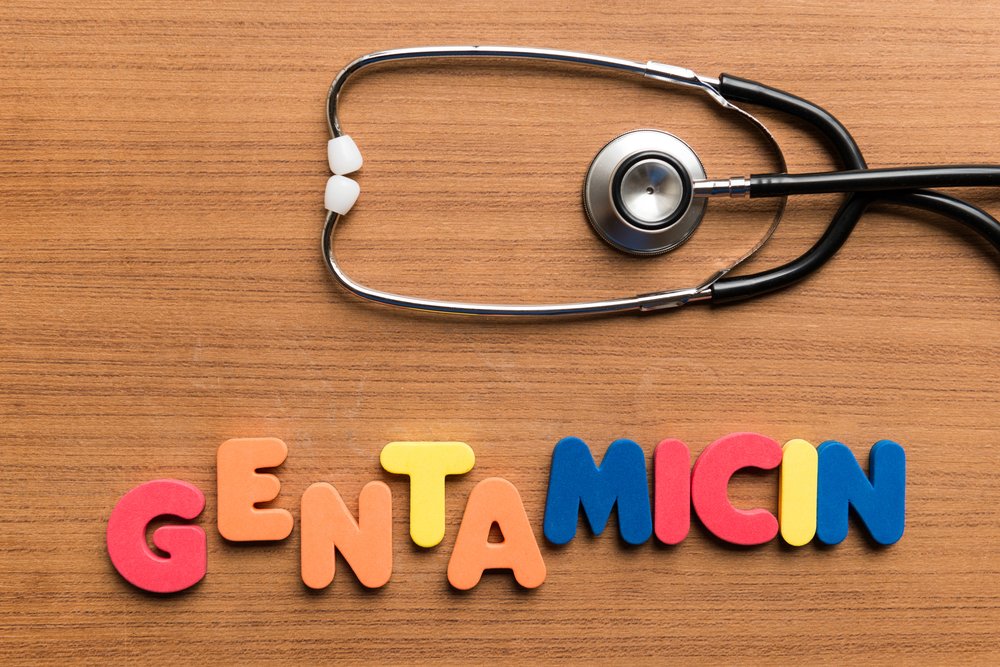Antibiotic Gentamicin Shows Promise in Specific Type of EB, Small Study Indicates
Written by |

Short-term application of the antibiotic gentamicin, either topical or intradermal, reversed the effect of nonsense mutations in a small group of patients with recessive dystrophic epidermolysis bullosa (RDEB) and led to the production of functional type VII collagen protein and anchoring fibrils.
RDEB is a severe form of epidermolysis bullosa, a disease which causes blistering and open skin wounds.
The study, “Gentamicin induces functional type VII collagen in recessive dystrophic epidermolysis bullosa patients,” was published in the Journal of Clinical Investigation.
RDEB is caused by mutations in the DNA sequence that provides instructions for a protein called type VII collagen (C7), the major component of anchoring fibrils (AF).
Characterized by skin fragility, blisters, erosions, and scarring, RDEB remains without a cure or effective treatment.
In previous studies, researchers found that gentamicin, which belongs to the aminoglycoside class of antibiotics, produced a functional type VII collagen in RDEB cells with nonsense mutations. This type of mutation results in an unstable C7 protein and accounts for approximately 30 percent of RDEB cases.
In other genetic diseases, such as cystic fibrosis (CF), gentamicin applied to the nasal epithelium of CF patients was found to be capable of restoring function to the CFTR protein, which malfunctions in CF patients due to a gene mutation. When applied intravenously, the prognosis of cystic fibrosis patients improved, a phenomenon also observed in patients with Duchenne muscular dystrophy.
In the wake of these results, researchers decided to investigate the effects of topical or intradermal gentamicin administered in C7 and its anchoring fibrils in RDEB patients.
They conducted a double-blind, placebo-controlled pilot study (NCT02698735) involving five RDEB patients — three adults and two children — with nonsense mutations. Patients received gentamicin topically or intradermally.
In the topical arm, the five patients were treated with either a 0.1% gentamicin ointment or placebo three times a day at two open skin erosion sites over two weeks.
For the intradermal treatment, four of the same five patients received daily intradermal injections of 8 mg gentamicin solution or placebo into two intact skin sites for two days.
The trial’s primary endpoint was the restoration of full-length type VII collagen (assessed by immunofluorescence) and anchoring fibrils (assessed by transmission electron microscopy) in the test sites. The study also assessed safety, “especially the detection of any ototoxicity or nephrotoxicity, as well as the production of anti-type VII collagen antibodies,” researchers wrote. They also evaluated wound closure in topically-treated open wounds.
Results showed that both topical and intradermal gentamicin induced the formation of type VII collagen and anchoring fibrils at the dermal-epidermal junction. The newly created C7 persisted for at least three months.
Short-term gentamicin administration by either route showed no unforeseen side effects. Also, patients with newly formed type VII collagen developed no signs of autoimmunity against the C7 proteins.
The topical administration also “corrected dermal-epidermal separation, improved wound closure, and reduced blister formation,” researchers wrote.
Overall, the results of this small trial showed that topical and intradermal gentamicin were able to suppress nonsense mutations and induce the formation of type VII collagen and anchoring fibrils. Although preliminary, these findings suggest that gentamicin application is a potential therapy for the 30 percent of RDEB patients with nonsense mutations.
In future studies, researchers will “determine the dose of gentamicin and the frequency of gentamicin delivery that optimize the generation of type VII collagen and anchoring fibrils at the dermal-epidermal junction of RDEB patients.”





